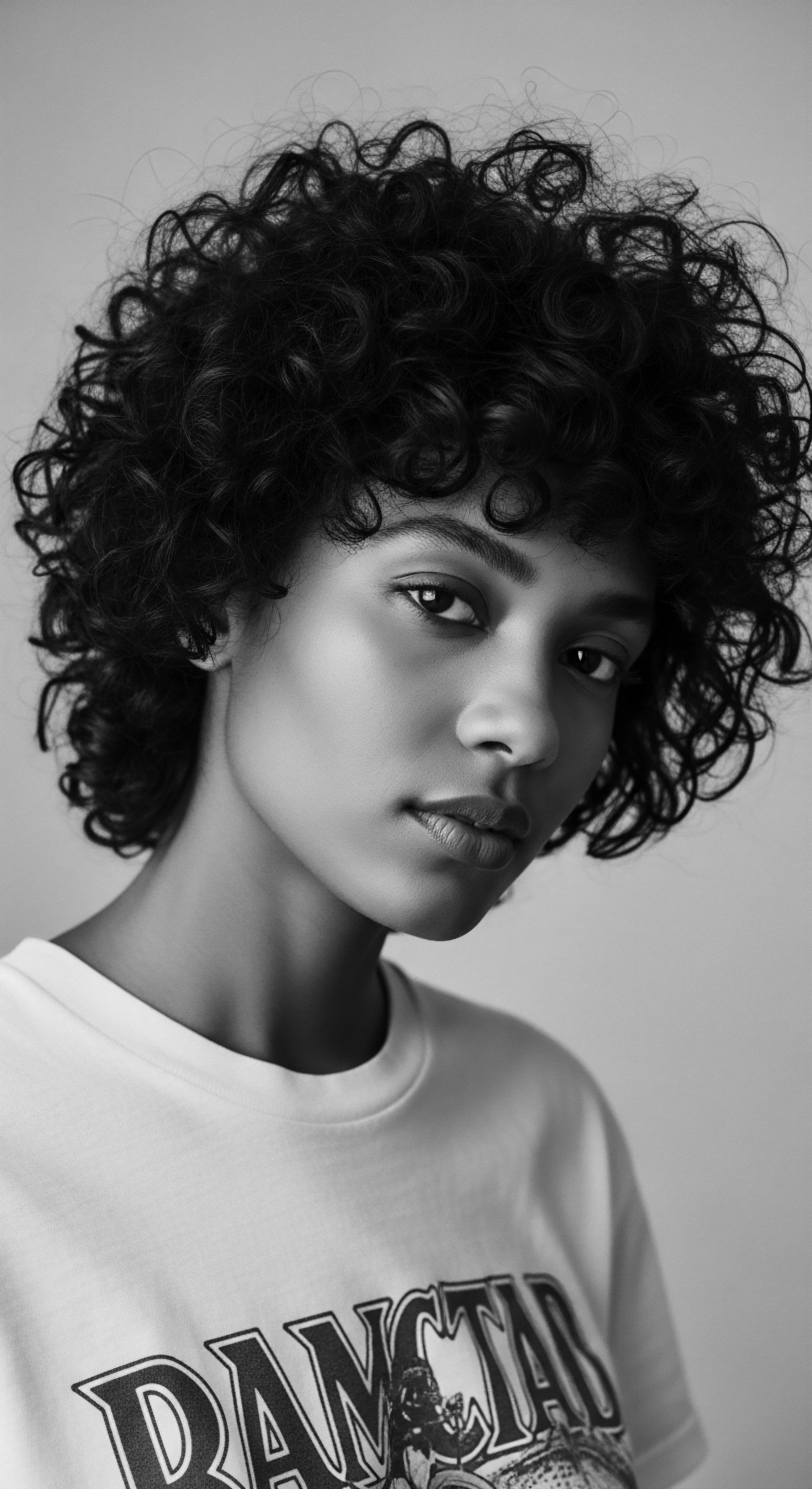
Fundamentals
The concept of Grain Hair whispers from the deepest recesses of our ancestral memory, speaking to the intrinsic character of each individual strand. It is not a superficial descriptor, nor a fleeting trend. This refers to the fundamental structural and textural qualities inherent within a person’s hair, particularly as these manifest in the rich spectrum of coils, curls, and kinks common within Black and mixed-race lineages. It embodies the innate way a strand forms, its distinctive shape, its natural tendency to clump or separate, and its responsiveness to moisture and the elements.
This explanation recognizes that hair, like the earth’s grains, holds a distinct pattern, a natural direction, and a unique way of existing. Understanding the grain of one’s hair is akin to learning the very language of our ancestral tresses, offering a pathway to care that honors its authentic nature.
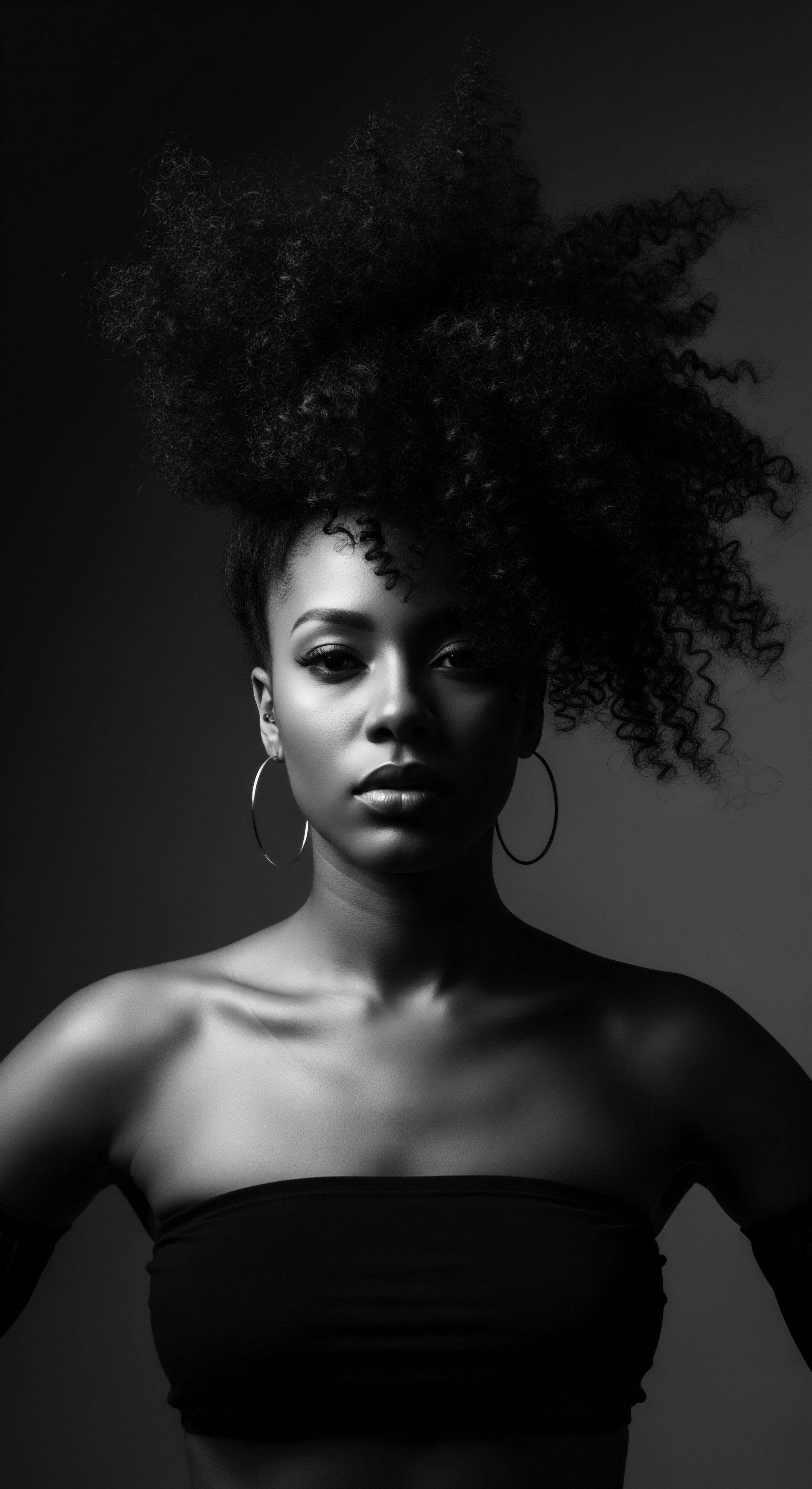
The Core Identity of a Strand
At its very genesis, Grain Hair defines how each follicle sculpts its nascent strand. This involves the cross-sectional shape of the hair shaft, which for textured hair is typically elliptical or flattened, a stark contrast to the rounder cross-sections seen in straighter hair types. This unique shape dictates the curvature, forming the spirals, waves, or zig-zags we observe.
Beyond shape, the term envelops the cuticle layer’s orientation, the internal arrangement of protein bundles, and the inherent porosity that influences how moisture enters and leaves the strand. It stands as a profound statement of biological inheritance, a silent narrative etched into every fiber.
Grain Hair signifies the intrinsic structural and textural qualities of hair, especially within textured strands, serving as a biological blueprint informed by ancestral lineage.

Observing the Grain in Its Simplest Form
For those new to the contemplation of Grain Hair, simple observation can open profound understandings.
- Curl Pattern ❉ Notice the consistent formation of your curls, coils, or waves. Do they form tight corkscrews, wide S-shapes, or sharp Z-bends? This pattern reveals a significant aspect of your hair’s inherent grain.
- Strand Feel ❉ Gently touch a single strand. Does it feel coarse or fine, wiry or soft? These tactile sensations hint at the strand’s thickness and cuticle integrity, both components of its grain.
- Moisture Responsiveness ❉ Observe how quickly your hair absorbs water or how long it retains moisture. Hair with a particular grain might possess higher porosity, demanding a more deliberate approach to hydration.
- Clumping Tendencies ❉ After wetting, does your hair naturally gather into defined clusters or does it prefer to separate? This natural clumping or separation speaks to the harmonious or individualistic inclinations of its grain.
The recognition of these foundational characteristics allows for an initial connection to one’s hair heritage, moving beyond superficial styling to a deeper appreciation of what each strand intrinsically offers. It is a humble beginning to a vast, inherited wisdom.
| Observation Point Curl Pattern Definition |
| What It Reveals about Grain Hair The natural shape and tightness of the coil, hinting at follicle morphology. |
| Observation Point Strand Diameter |
| What It Reveals about Grain Hair Whether individual strands are fine, medium, or thick, influencing overall density and feel. |
| Observation Point Surface Smoothness |
| What It Reveals about Grain Hair The integrity and alignment of the cuticle layers, affecting shine and frizz. |
| Observation Point Natural Clumping |
| What It Reveals about Grain Hair How individual strands interact and align to form larger curl families. |
| Observation Point These initial observations provide a gateway into appreciating the unique, inherited characteristics of one's hair. |
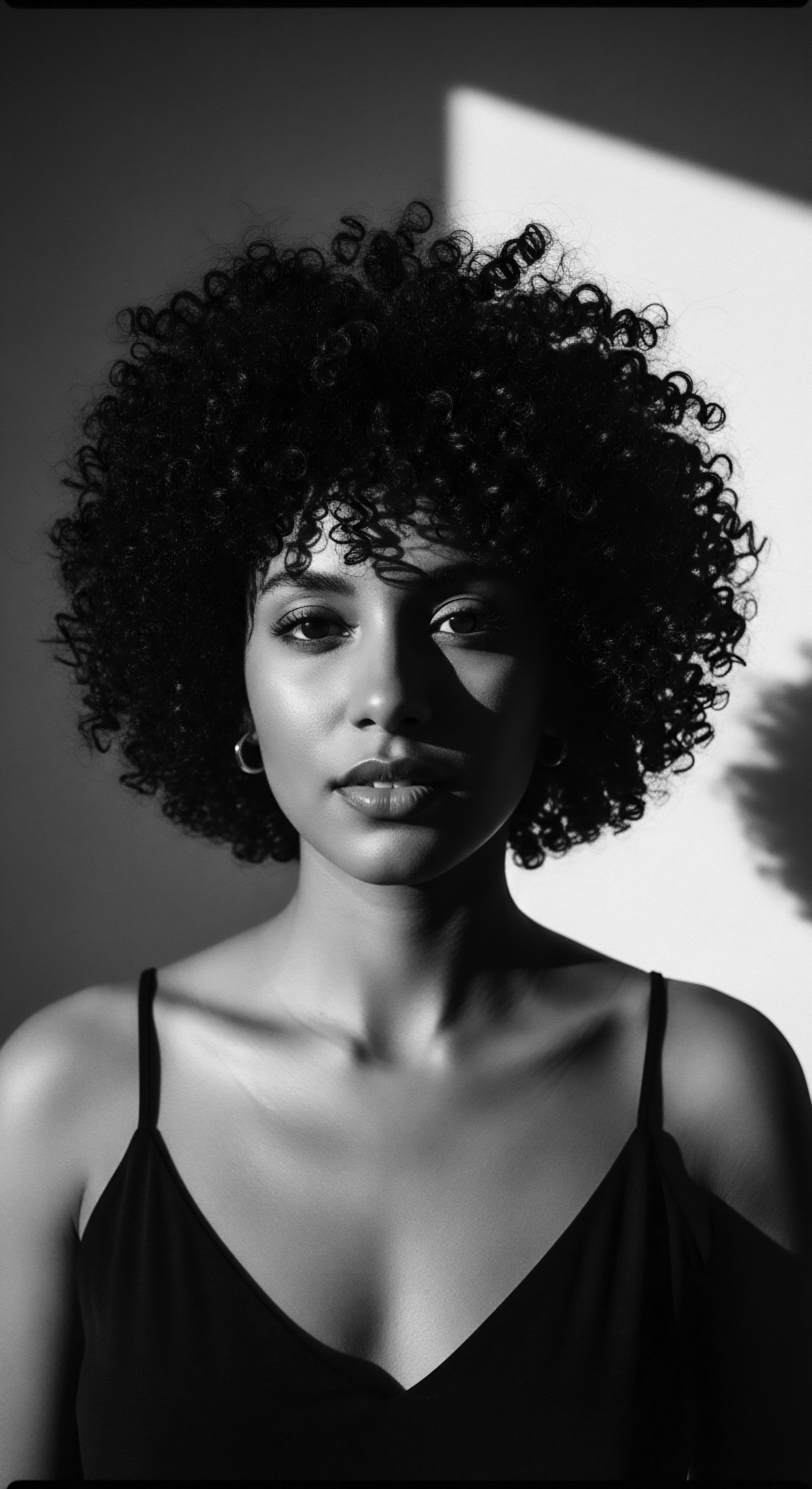
Intermediate
Delving further into the meaning of Grain Hair reveals a more intricate understanding of its influence on the daily life of textured hair. This concept extends beyond mere observation, encompassing how the intrinsic structural qualities of hair dictate its behavior, its unique needs, and how ancestral care practices emerged as a direct, intuitive response to these inherent characteristics. It represents a deeper dialogue between the hair’s elemental biology and the human hands that have nurtured it across generations.

The Biophysical Language of Coils and Kinks
The Grain Hair manifests as a distinct biophysical language, speaking through the very architecture of each strand. Highly coiled hair, a common manifestation of Grain Hair within Black and mixed-race populations, typically possesses an elliptical or ribbon-like cross-section. This asymmetry, compounded by a curved hair follicle, compels the strand to grow in a spiral or helical fashion. This unique anatomical reality results in an uneven distribution of cellular components within the hair shaft, contributing to areas of inherent mechanical weakness along the curves of the coil.
The cuticle layers, which serve as the hair’s protective outer shield, are often more lifted at these points of curvature, leaving the inner cortex more exposed. This structural particularity means that textured hair, by its very grain, often has a greater propensity for dryness and fragility when compared to straighter hair types. The inherent disposition for moisture loss becomes a key characteristic, a fundamental element of its Grain Hair.
The distinct biophysical attributes of Grain Hair, particularly in coily textures, dictate its natural tendencies towards dryness and vulnerability, requiring specific modes of care.

Ancestral Wisdom and the Grain’s Needs
The deep ancestral wisdom embedded in Black and mixed-race hair care traditions represents a powerful, intuitive understanding of Grain Hair. Before scientific laboratories could precisely dissect hair morphology, our foremothers developed sophisticated practices designed to honor and protect the unique inclinations of textured strands. Consider the long-standing tradition of using natural butters and oils, such as Shea Butter.
Originating from the nuts of the shea tree found in the African Sahel, shea butter was not simply an arbitrary choice. Its rich composition of fatty acids—linoleic, oleic, stearic, and palmitic—acts as an exceptional sealant, effectively locking moisture into the hair shaft.
This practice directly addresses the higher moisture evaporation rate often observed in highly textured Grain Hair due to its lifted cuticles and elliptical shape. The ancestral knowledge recognized that these strands craved consistent, lasting hydration to maintain their resilience and prevent breakage. Similarly, the meticulous practice of protective styling, such as braiding and twisting, safeguarded the inherent fragility of coiled Grain Hair from environmental stressors and daily manipulation.
These styles minimized friction and mechanical stress, preserving the integrity of the hair shaft where it was most vulnerable. The very act of gathering hair into intricate patterns served as a testament to an innate understanding of its delicate nature.
Such enduring practices demonstrate a profound intergenerational dialogue with Grain Hair. They are not merely beauty routines, but rather inherited technologies of care, passed down through touch and oral tradition, each motion reinforcing a connection to the material realities of textured strands and the legacy they carry. The consistency of ancestral hair rituals across different West African communities, for example, points to shared observations of the hair’s behavior—its “grain”—and the development of communal responses that became codified traditions.
- Traditional Oiling Practices ❉ The application of natural oils and butters was a response to the inherent dryness of highly coily Grain Hair. These emollients would often be massaged into the scalp and along the hair shaft to provide sustained moisture.
- Protective Styling ❉ Braiding, twisting, and wrapping hair shielded vulnerable strands from friction and environmental damage, preserving the integrity of the hair’s natural curvature.
- Gentle Detangling ❉ Ancestral wisdom often emphasized finger-detangling or using wide-toothed tools, minimizing stress on the fragile points of coiled Grain Hair.
- Herbal Infusions ❉ Many communities incorporated specific herbs and plant extracts, chosen for their conditioning or strengthening properties, working in concert with the hair’s innate characteristics.
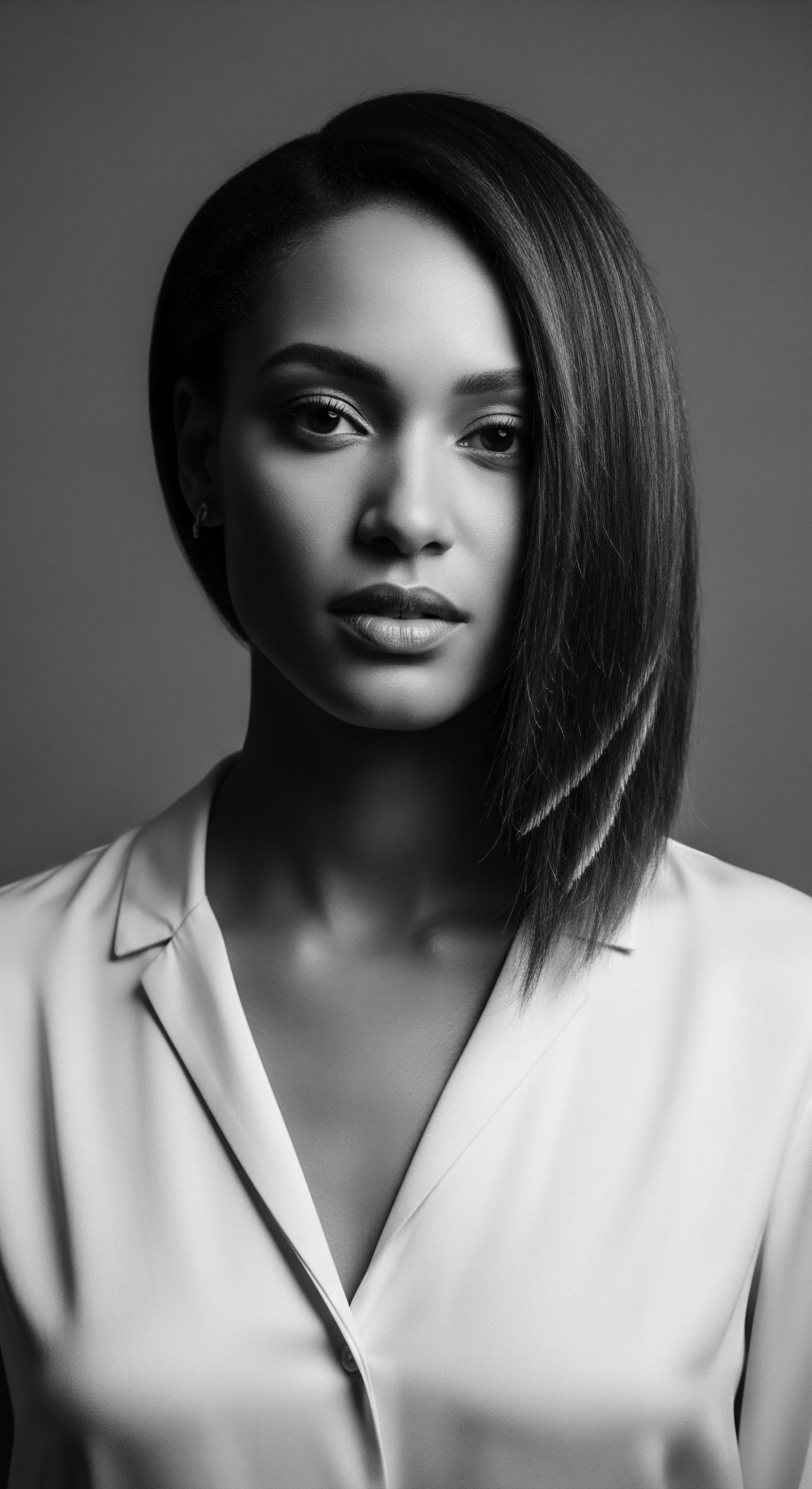
Academic
The academic understanding of Grain Hair transcends anecdotal observation, delving into the intricate cellular and molecular architectures that define textured hair, especially within populations of Black and mixed heritage. It is a rigorous scientific exploration that often validates the empirical wisdom passed down through generations, offering a precise nomenclature to the profound knowledge held by our ancestors. This scientific lens reveals the profound biological inheritance that shapes the unique meaning of Grain Hair.

The Morphological and Biochemical Signatures of Grain Hair
At the micro-anatomical level, Grain Hair refers to the distinctive morphological and biochemical characteristics that differentiate highly coiled or kinky hair from straight or wavy types. The hair follicle, the structure from which the hair shaft grows, exhibits a remarkably curved, helical, or spiral shape in textured hair, a stark departure from the straight or slightly curved follicles associated with other hair types. This pronounced follicular curvature directly influences the resulting hair shaft’s elliptical or flattened cross-sectional shape, a critical determinant of its curl pattern. The orientation and distribution of keratinocytes—the cells that produce hair—within the follicular bulb are asymmetrical, compelling the hair to grow in a spiral path.
This asymmetry is further reflected in the internal structure of the hair shaft itself, where the two primary types of cortical cells, the orthocortex and paracortex, are unevenly distributed. Coiled hair often displays a higher proportion of orthocortex cells, contributing to its unique tensile properties and inherent mechanical vulnerabilities at the points of extreme curvature.
Beyond its shape, the biochemical composition of Grain Hair presents distinct features. Research indicates that African hair, despite often being perceived as dry, can exhibit a higher overall lipid content, particularly apolar lipids, compared to Asian or European hair. However, the distribution of these lipids, coupled with the open nature of the cuticle layers along the curves of the hair shaft, can lead to increased water loss and perceived dryness.
The cuticle, the outermost protective layer, tends to be more lifted or fragmented in highly coiled hair due to the constant bending and twisting of the strand, rendering it more susceptible to damage from environmental factors and mechanical manipulation. The inherent disposition for moisture loss, therefore, is not merely an external condition, but an intrinsic aspect of the Grain Hair’s biophysical makeup.
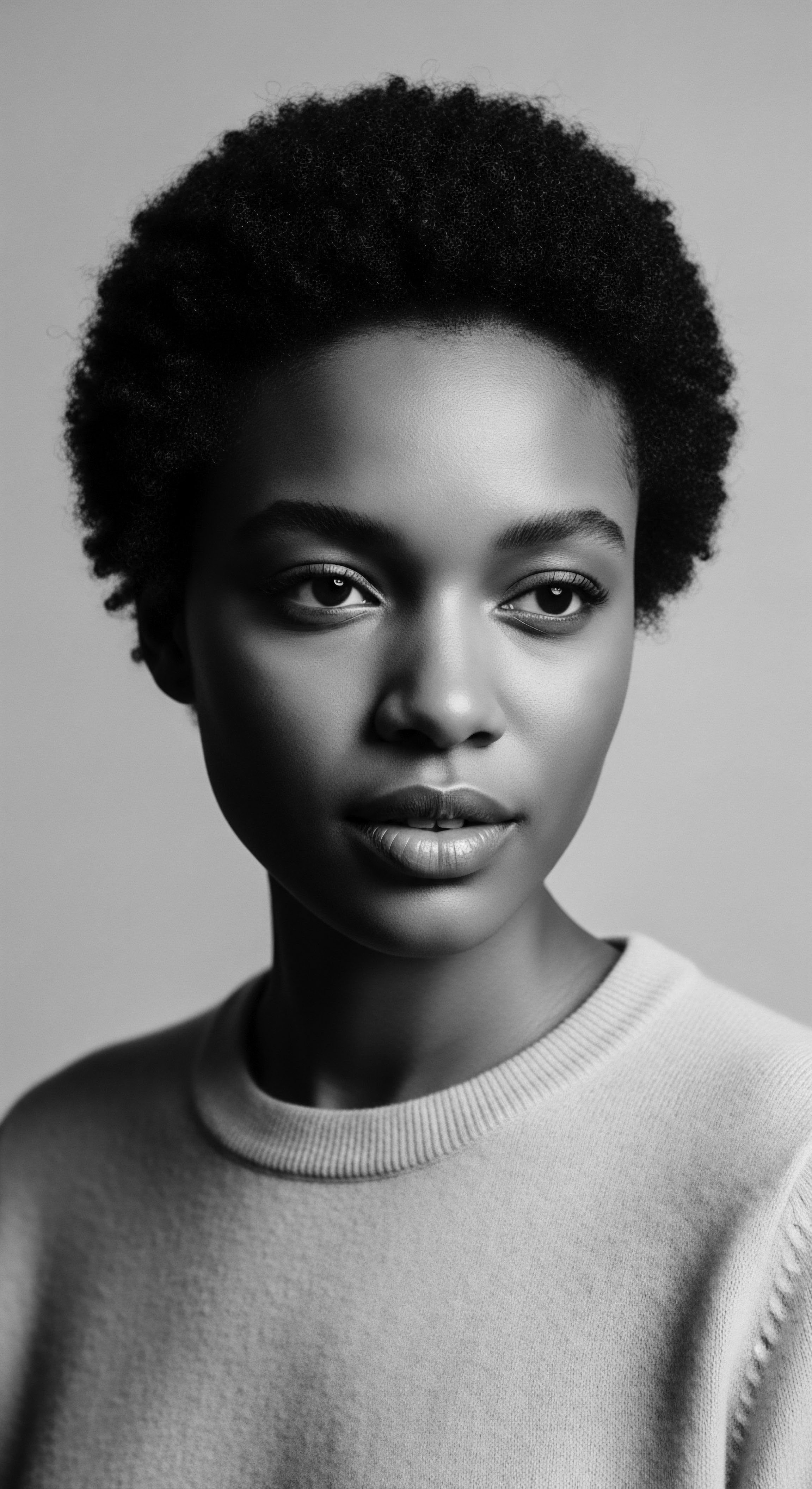
A Case Study in Ancestral Ingenuity ❉ Shea Butter and the Grain
The historical use of Shea Butter across West Africa and the diaspora serves as a powerful case study, illuminating how ancestral practices implicitly engaged with the biophysical realities of Grain Hair long before scientific explanations were articulated. The knowledge of shea butter’s profound benefits for hair—its ability to moisturize, protect, and soften—was not coincidental; it arose from centuries of lived experience and keen observation. As early as the 14th century, shea butter was a traded commodity, revered for its diverse applications, including hair care. Its prominence as “Women’s Gold” in many African societies speaks to its economic and cultural significance, often produced by women’s cooperatives, providing a vital source of income.
Scientific investigations in contemporary times offer compelling validations of this ancestral wisdom. The unique composition of shea butter, rich in fatty acids and vitamins A and E, provides a substantive explanation for its efficacy. These compounds function as emollients and sealants, creating a protective barrier on the hair shaft. This property is especially pertinent for textured Grain Hair, which, as Loussouarn (2001) highlighted in his research on hair rheology, often experiences higher rates of moisture evaporation due to its distinctive cuticle morphology and helical growth pattern.
The practice of applying shea butter, particularly to damp hair, effectively seals in moisture, counteracting the inherent propensity for dryness that is characteristic of the hair’s grain. This traditional application directly addresses the structural vulnerability of coiled hair, providing lubrication to the cuticle and cortex, thereby minimizing friction and reducing breakage. The historical continuity of this practice demonstrates a sophisticated, empirically derived understanding of how to sustain the health and vitality of textured hair, illustrating a profound connection between ancestral remedies and the deep-seated biophysical needs of the Grain Hair itself. It is a powerful reminder that our foremothers were, in essence, pioneering hair scientists, observing, experimenting, and codifying knowledge through generations.

Interconnected Incidences ❉ The Socio-Cultural Dimensions
The meaning of Grain Hair extends beyond its biological definition, encompassing profound socio-cultural dimensions, particularly within the Black and mixed-race diaspora. Historically, the innate characteristics of textured hair—its volume, its capacity for intricate styling, and its symbolic weight—have been simultaneously celebrated as expressions of identity and simultaneously subjected to oppressive beauty standards. The imposition of Eurocentric ideals during and after periods of slavery and colonization often led to the devaluing of natural Grain Hair, equating straighter textures with “good hair” and social acceptability. This created a complex psychological landscape where the very grain of one’s hair could become a site of internal conflict or external discrimination.
The historical interplay between the inherent characteristics of Grain Hair and societal perceptions forged a complex narrative of identity, resilience, and resistance.
However, the enduring legacy of Grain Hair is also one of profound resilience and cultural reclamation. The Civil Rights and Black Power movements of the 1960s, for instance, spurred a powerful resurgence of pride in natural hairstyles, transforming the Afro into a potent symbol of liberation and self-affirmation. This movement was a direct challenge to the historical subjugation of textured Grain Hair, advocating for the celebration of its authentic form. Today, the natural hair movement continues this journey, recognizing the inherent beauty and strength of all textures.
This ongoing cultural shift speaks to the persistent power of Grain Hair as a marker of identity, a connection to ancestry, and a canvas for self-expression, actively resisting narratives that seek to diminish its inherent value. The journey to understand and cherish one’s Grain Hair becomes a personal act of decolonization and an affirmation of inherited beauty.

Reflection on the Heritage of Grain Hair
To contemplate Grain Hair is to gaze upon a living archive, a profound meditation on the enduring legacy etched into every strand of textured hair. It reminds us that our coils, curls, and kinks are not mere aesthetic choices; they are resonant echoes from the source, biological blueprints carrying the wisdom of countless generations. This understanding invites us to approach our hair not with a desire to tame or alter, but with a deep reverence for its inherent disposition, its ancestral cadence. The meticulous practices of our foremothers, those tender threads of care woven through time, were direct conversations with the grain of the hair, responses to its needs for moisture, protection, and gentle handling.
Their hands, guided by inherited wisdom, intuited the very science that modern laboratories now confirm. This continuous lineage of care, born from an intimate familiarity with the hair’s elemental nature, grounds us in a heritage of self-acceptance and profound connection.
In the spirit of Roothea, we recognize that the journey to understand our individual Grain Hair is a sacred one. It is a path towards rediscovering a piece of ourselves, a whisper from the past that shapes our present and guides our future. Each twist, each curl, holds not only the story of its own formation but also the collective narrative of resilience, beauty, and identity that has flowed through our communities for centuries.
The strength and versatility of textured hair, often underestimated, stand as a testament to the power of its unique grain, capable of enduring historical pressures and continually adapting to new expressions. As we continue to learn, to nurture, and to celebrate this inherent characteristic, we are not simply caring for hair; we are honoring a profound ancestral inheritance, ensuring that the rich heritage of Grain Hair remains an unbound helix, ever spiraling forward, carrying stories of strength and splendor for generations yet to come.

References
- African American Museum of Iowa. (n.d.). History of Hair.
- Afriklens. (2024, November 1). African Hairstyles ❉ Cultural Significance and Legacy.
- EBSCO Research Starters. (n.d.). Afro-textured hair.
- Kilburn & Strode. (2021, October 29). Afro-texture ❉ a hair-story.
- Livara Natural Organics. (2023, December 10). African Ingredients for Healthy Hair ❉ Shea Butter.
- Loussouarn, J. F. (2001). Hair structure and rheology ❉ The influence of ethnic origin. Journal of Cosmetic Science, 52(4), 231-248.
- Medical News Today. (2021, September 30). Biracial hair types ❉ What to know.
- MDPI. (n.d.). The Genomic Variation in Textured Hair ❉ Implications in Developing a Holistic Hair Care Routine.
- NaturallyCurly. (2018, June 18). Shea Butter for Hair ❉ Healing Magic.
- Pattern Beauty. (2023, April 9). Shea Butter For Curly Hai ❉ Benefits & Use Cases.
- The Tech Interactive. (2005, April 26). Why do people of African descent have a unique hair texture?
- UAL Research Online. (n.d.). African hair ❉ exploring the protective effects of natural oils and silicones.
- University of Miami Miller School of Medicine. (n.d.). Hair Care Practices in African American Women.
- Curlvana. (n.d.). Shea Butter ❉ Benefits, Uses, Side-Effects & More.
